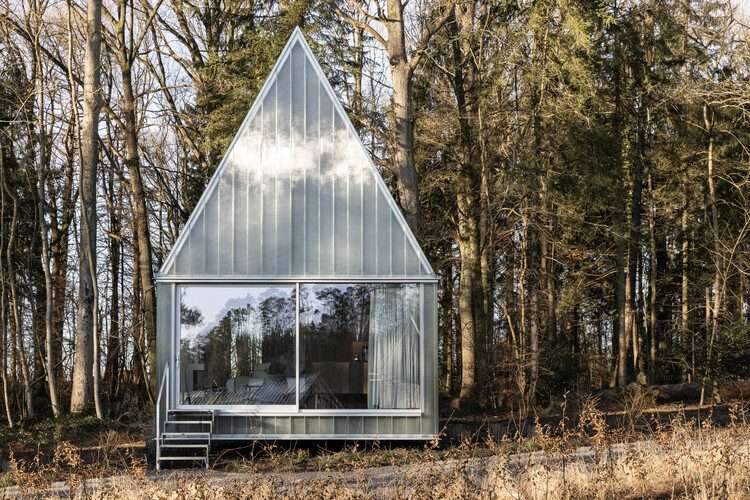Amidst chiming Teams or Slack notifications, the strum of family togetherness, and din that became de rigueur in lives spent at home, some homeowners found relief and quietude in the form of hidden spaces—nooks, niches, deep closets, and other similarly cozy spots—in which to collect their thoughts and catch their breath while shutting out the rest of the world. Retreating to a just-for-you space became as important a daily ritual as brushing your teeth. Even a modestly sized hideaway can evoke big calming effects on overexcited nerves, no doubt due in part to its enveloping and womb-like environment. (However on the nose, Cara Delevingne’s “vagina tunnel” may be the ultimate example of the trend.) Some people love to sleep in these spaces, others prefer to read books, and some others meditate in silent darkness.
Indeed what resonates with these secret spots is the fact that they are hidden, generally camouflaged but still accessible, and offer a quick escape from common gathering spaces. For many, they’re not just a place of respite, but somewhere to work, imbibe, entertain, and store valuables. In some instances, they might even become full-fledged rooms for activities like crafts or something more provocative where consenting adults are involved.
Speakeasies have had this concept nailed down since the days of Prohibition. And cataphiles, or those urban explorers who intentionally roam the catacomb tunnels under the city of Paris, know the allure and excitement of hidden passageways. This interest in covert spaces has only grown in recent times, increasingly appearing in our home spaces and challenging architects, designers, and homeowners to thoroughly rethink the small spaces that may be hiding in plain sight.
Cathy Purple Cherry, architect and principal of Purple Cherry Architects in Annapolis, Maryland, shares that it’s not unusual for clients to ask her team to conceptualize new ways to create veiled spots within their homes. Rule one: Never underestimate the power of a conversation starter. “These spaces create a unique experience that clients enjoy showing their guests,” says Purple Cherry, who recently masterminded a sweet children’s crafts room behind a spinning bookcase for a residence. In another project, she worked with Annapolis based Pyramid Builders to engineer and fabricate a wood-paneled secret door that opens like an escape hatch from a spy novel.
Josh Linder of Boston design firm Evolve Residential says the charm is all in the “wow moment” that these hidden spaces afford. Currently, the firm is endeavoring to create a bar that will pull out to reveal a hidden space behind it. “For me, there is a certain childhood fantasy fulfilled every time I experience a hidden doorway. I could not possibly have imagined anything cooler when I was young, and the experience still brings me joy,” Linder says.
But don’t mistake this cleverness for child’s play. Turns out, our need to escape, at least some of the time, is fundamental to the replenishment of energy and mental coolness, explains Sarah Williams Goldhagen, architecture critic and author of Welcome to Your World: How the Built Environment Shapes Our Lives. “One of the elements in both Attention Restoration Theory and Appleton’s Prospect-Refuge hypothesis is the notion that, for a space to be restorative, it needs to confer the sense of ‘being away.’ Now that so many people are working from home, they need these kinds of ‘being away’ spaces more than ever: Such hidden enclaves encourage us to shift cognitive sets, which is a necessary precursor to restoring energy, gaining perspective, and replenishing depleted attentional resources.”

